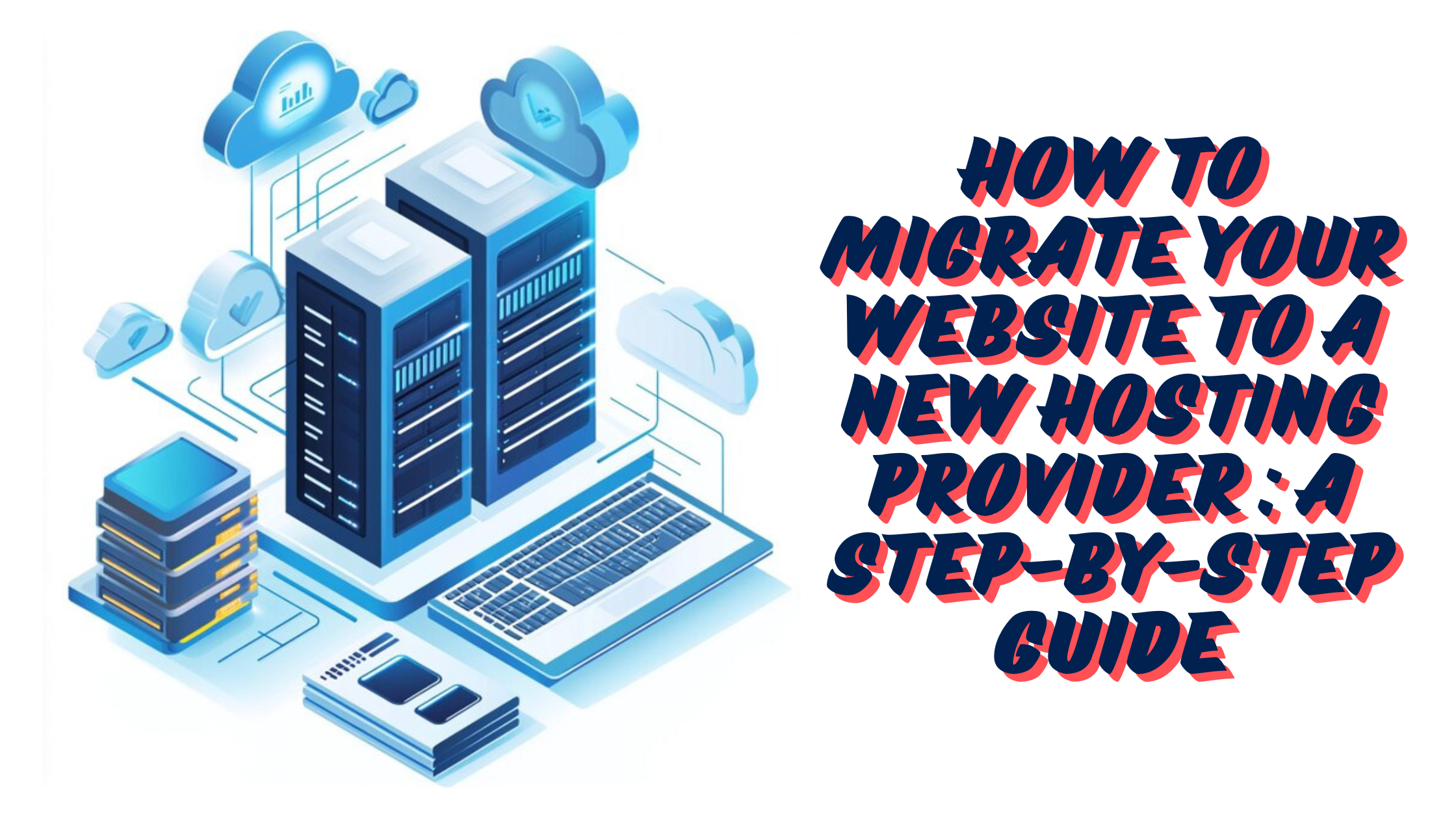Table of Contents
Migrating your website to a new hosting provider might seem like a daunting task, but with careful planning and execution, it can be a smooth transition. Whether you’re seeking better performance, support, or pricing, moving to a new hosting service can significantly improve your site’s overall performance. This guide will walk you through every step, from preparation to post-migration tasks, ensuring a seamless experience.
Why Migrate Your Website?
There are many reasons why you might need to switch hosting providers. The most common ones include:
- Performance Issues: If your site is slow or experiences frequent downtimes, it may be time to switch to a more reliable hosting provider.
- Need for More Resources: As your site grows, you may need more bandwidth, storage, or enhanced security features that your current provider cannot offer.
- Cost Considerations: You might be able to find more affordable web hosting in India or the cheapest web hosting in India without compromising on quality.
- Better Customer Support: If your current host lacks responsive support, it may be time to switch to a provider known for excellent service.
Step 1: Choose a New Hosting Provider
Before you begin the migration process, you need to select a new hosting provider. The decision depends on several factors:
- Cost: Look for affordable web hosting in India that fits your budget. Ensure that the new provider offers the resources you need without excessive fees.
- Features: Your new provider should offer features like free SSL certificates, 24/7 support, backups, and easy control panel access.
- Performance: Research the speed and reliability of potential hosting providers by reading reviews and checking for uptime guarantees.
If you’re looking for budget-friendly options, you can explore the cheapest web hosting in India that still provides quality services. Companies like Hostinger, GoDaddy, and Bluehost offer affordable plans.
Step 2: Backup Your Website
Before migrating, make a full backup of your site. This ensures you can restore your site in case something goes wrong during the migration process.
How to Backup:
- Manual Backup: Use FTP (File Transfer Protocol) to download all the files from your website’s directory.
- Database Backup: For dynamic sites like WordPress, you also need to back up your database. Use phpMyAdmin or a plugin like “UpdraftPlus” to do this.
- Hosting Provider Backup: Some hosting services offer one-click backup solutions, so check if this is available.
Step 3: Set Up Your New Hosting Account
Once you’ve chosen a new hosting provider, you’ll need to set up your account and hosting environment. Here’s what you need to do:
- Sign Up for a Hosting Plan: Choose a plan based on your site’s needs. If you’re on a tight budget, opt for affordable web hosting in India.
- Choose a Domain: If you’re migrating your existing domain, you’ll need to update your DNS settings later in the process.
- Install Website Software: For content management systems like WordPress, your new host should offer easy installation options via cPanel or a custom control panel.
Step 4: Transfer Your Website Files
Now it’s time to move your website’s files from your old hosting provider to the new one. There are several methods to do this:
- FTP/SFTP: Use an FTP client like FileZilla to upload your backup files to the new hosting server.
- File Manager: Many hosting providers offer file manager tools in their control panels where you can directly upload files.
- Website Migration Tools: Some hosts offer migration tools or services to automate the process. For example, WordPress users can use plugins like “Duplicator” or “All-in-One WP Migration.”
Step 5: Transfer the Database
For dynamic websites like WordPress, Joomla, or Magento, you’ll also need to transfer the database:
- Create a New Database: In your new hosting account, create a database and user with full privileges.
- Import the Backup: Use phpMyAdmin or your hosting panel’s database management tool to import the database backup you created earlier.
- Update Configuration Files: You may need to update your website’s configuration files (like wp-config.php for WordPress) with the new database name, user, and password.
Step 6: Update DNS Settings
To point your domain to the new hosting provider, you need to update your DNS (Domain Name System) settings:
- Access Domain Registrar: Log into your domain registrar (e.g., GoDaddy or Namecheap) and update the name servers to the ones provided by your new host.
- DNS Propagation: This process can take anywhere from a few hours to 48 hours. During this time, your site may still appear hosted on your old provider.
Step 7: Test Your Website on the New Host
After migrating your files and database, you should thoroughly test your site to ensure everything is functioning properly. Here’s what to check:
- Broken Links or Images: Verify that all links, images, and functionalities work as expected.
- Website Speed: Check the speed of your site with tools like Google PageSpeed Insights to see if your new host provides better performance.
- Error Logs: Look for error messages or warnings in your hosting control panel.
Step 8: Cancel Your Old Hosting Plan
Once you’re sure that your website is running smoothly on the new host, you can cancel your old hosting plan. However, it’s a good idea to wait until the DNS propagation is complete and you’ve thoroughly tested the new setup.
Step 9: Monitor Your Website Post-Migration
Even after the migration, you should monitor your website to ensure there are no unforeseen issues. Look for the following:
- Downtime: Use monitoring tools like UptimeRobot to track any potential downtime.
- Security: Make sure your SSL certificate is functioning properly to keep your site secure.
- SEO Impact: Ensure that the migration hasn’t negatively affected your search engine rankings.
Conclusion
Migrating your website to a new hosting provider doesn’t have to be stressful. By following these steps, you can ensure a smooth transition with minimal downtime. Be sure to choose the right host that offers affordable web hosting in India or the cheapest web hosting in India to get the best value without compromising on service quality. With proper planning and execution, you can enjoy better site performance, more resources, and potentially lower hosting costs.



